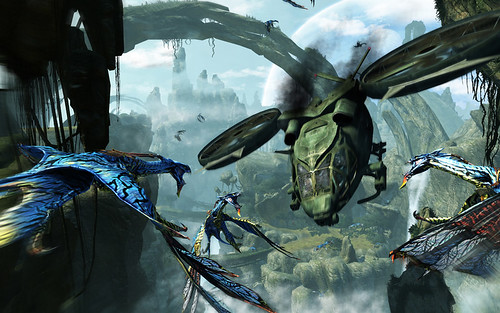 Graphics is about as sexy as IT can get; and that is saying something, because IT is NOT a sexy area. Even a geek like me can pick-up at a club if I mention that I do 3D graphics like those in games and motion pictures. Maybe.
Graphics is about as sexy as IT can get; and that is saying something, because IT is NOT a sexy area. Even a geek like me can pick-up at a club if I mention that I do 3D graphics like those in games and motion pictures. Maybe.Back on topic. Some serious technology is coming around the corner which will influence the realism of games and simulations by an order of magnitude.
First of all, Mach Studio Pro, a cinematic rendering system that utilises a GPU to generate high-quality, anti-aliased graphics in interactive time-frames. Typically, cinematic graphics has meant render times of days at a time for high quality scenes, such as those used in movies like Avatar. Now it only takes seconds or minutes at most using this GPU assisted technology. Previously, the high quality rendering systems have not used the GPU to such good effect, until now. So we are at the point that cinematic graphics will soon appear in games and simulations, not just the blocky "cinematic" work that we see presently, but REAL cinematic graphics. By this I mean graphics that uses millions of polygons (not low res normal mapped objects), large resolutions (HD is small by cinema standards), high quality lighting models (photon mapping, ray tracing) and texture maps large enough to prevent any distortion via magnification or minification.
Have a look at the quality of the images in the above Mach Studio Pro web site, and see how these images are a jump ahead in quality. While Crysis/Metal Gear Solid/Gears of War 2 et al have all been major moves forward, this next phase could seriously improve the sense of immersion in these games, bringing about clear, crisp artifact free graphics in real time.
This new approach is going to be powered by into the future by GPU/CPU hybrids with 40+ cores on the chips, all providing Terraflops of performance (Intel, AMD results listed), and all with the power requirements of a standard desktop - am a little skeptical here on the power needs, but we will see what happens. Intel, nVidia and AMD are going head to head with their GPU/CPU approaches to processor construction, and this is now bringing about huge competition in this arena, with large amounts of capital invested in what is perceived as disruptive GPU processing technology.
So, you will get Avatar quality graphics in real time, all ready to role on a standard desktop. For a simulation engineer like me, I can't wait. Any hospital, emergency service and environmental process simulations will have much more emotional import due to the CPU/GPU power to give immersive graphics, and then have the power besides for quality Physics, AI and Motion Capture Animation. All the nuances of a scene can be captured and simulated, ready for education and communication purposes, giving much more engaging and rigorous training exercises for students and business stakeholders alike.
Problems will occur with content production being even more difficult with the extra capabilities of the hardware and software combinations, but that will keep researchers like me in the business of providing tools to support the use of such environments by non-IT domain specialists. :-)
In the end, movies like Avatar will become programs that you download and run on your PC. To an extent this is already happening, with game tie-ins to major movies. Only in the future, the games will become more important than the movies. In effect, the movie will be the trailer to the interactive game environment they are actually trying to sell to you.
Ross
No comments:
Post a Comment